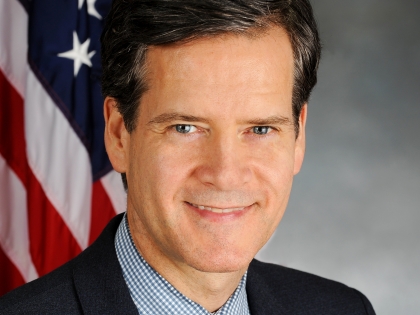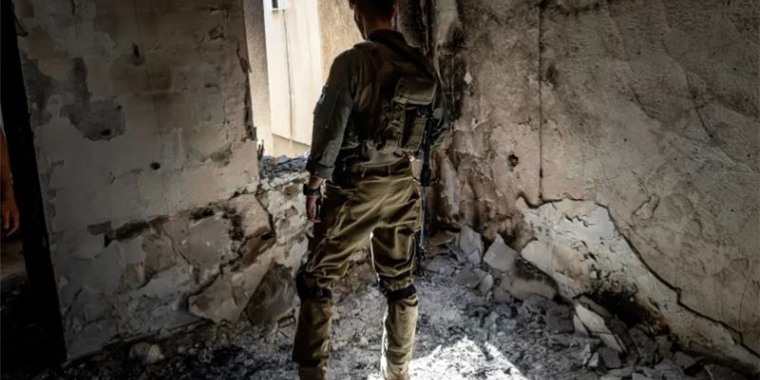
Testimony on Empire Station Complex Project
July 22, 2020
We appreciate the opportunity to submit comments regarding the Draft Scope of Work for the Empire Station Complex Project.
Overview
Our districts, which cover portions of the neighborhood in and around Penn Station and the proposed expansion, have seen enormous residential and commercial growth over the last two decades. The increase in scale and density on Manhattan’s West Side as a result of rezonings and development has led to a dramatic increase in the number of people who live and work around Penn Station and who rely on this transit hub.
The priority of the draft scope of work needs to be to create a transit hub for the City and surrounding areas that drastically reduces greenhouse gas emission and encourages multimodal use of public transit.
The proposal lacks a commitment to both the commercial and residential tenants that will be displaced as a result of this project, and to meeting the needs for community facilities, public space, or affordable housing.
The Empire Station Project is an opportunity to reimagine transportation and use it as a way to address a myriad of interconnected societal issues such as homelessness, affordable housing, and access to public space.
What follows are key areas that we believe require further study. Many of these ideas are expanded upon in the testimonies submitted by Manhattan Community Boards 4 and 5. We urge Empire State Development to thoroughly review CB4 and CB5’s thoughtful testimonies. As the communities most impacted by Penn Station and its operations, CB4 and CB5’s detailed comments deserve the highest consideration.
Land Use Zoning and Public Policy
ESD must incorporate greatly increased mixed-use affordable housing into the plan, particularly at Sites 1 and 4, but should also consider other sites located in both CD4 and CD5. Relocation of the displaced residents and commercial tenants should be considered in this analysis as well. As increased residential use is incorporated, the scope should include an assessment of how this will change the need for schools, healthcare, C1 commercial, and other neighborhood facilities.
The scope should examine how Madison Square Garden can be incorporated so as not to be an impediment, or moved within the neighborhood so as to support the transportation goals of a modernized Penn Station. We ask that ESD continue to consult MSG in this endeavor.
As a regional hub that serves commuters from multiple states, the availability and incorporation of federal funding should be examined. Alternatives to the sale of development rights should be examined and the Scope should prove that alternative funding mechanisms are not available. We would like a clear plan for the transfer of air rights, should the air rights not sell, to ensure that the high density burden does not fall on unsuspecting places in our communities. We also request that the plan include an alternative to spread the transfer of development rights outside the immediate area, mitigating the potential for increasing overdevelopment of this area.
The Draft Scope discusses ESD overrides of existing zoning and local law. The Scope should include a description of the existing zoning with the proposed overrides. The Scope should also discuss approximate building height in the context of number of stories (besides FAR) so that the public can better understand what is being proposed.
Socioeconomic Conditions
Increased study and alternatives for current commercial and residential tenants must be examined. The Scope must identify how many of these sites are rent stabilized or under other affordable housing programs. We disagree with the analysis that only 200 people will be impacted with residential displacement. More than 200 people live within a one-quarter mile radius of the Project Area and analysis should include the impact of likely rising rents on these residents.
Community Facilities
The proposed reduction of 190,000 square feet of community facilities will impact the users of the numerous nonprofits and social services institutions in the area. Organizations that will be displaced include the heavily-used Antonio Olivieri Drop-in Center, the New York Restoration Project, and the Wounded Warrior Project, on Site 2, and Touro College on Site 1. The organizations that provide critical social services in the community, including those for homeless individuals, should be considered an integral part of the Complex and have free or nominal rent in exchange for the services they provide. The displacement of social services, affordable units and small businesses must be studied and temporary locations during construction, on-site replacements and potential additions must be proposed. Other nonprofits should receive assistance in relocating if on-site locations cannot be found, at a nominal or subsidized rent.
A study of the need for community facilities in an expanded Secondary Study area should also be conducted to determine what public amenities are necessary to support the inevitable influx of more people. Especially in CD4, there is a deficit of school seats, child care facilities, and medical facilities, as well as a need for more open space. Creative uses should be explored, such as a museum on Penn Station history, meeting spaces for community organizations, and spaces for events and town hall meetings.
Open Space
The open space analysis should be conducted for both residential and commercial needs, as the plan will be adding many new populations to the area from the high density commercial buildings, shoppers and new retail, commuters, and new residents from the surrounding community. The open space proposed at Site 2 is insufficient to meet this future growth. It is important that tree planting and opportunities to “green” the open space be studied, as this creates another opportunity to improve air quality as well as the pedestrian experience of the areas.
Shadows
The DEIS should include a shadow analysis to measure impacts on low-scale residential buildings, such as Penn South and on West 30th Street.
Historic and cultural resources
The demolition of the original Penn Station was one of the greatest architectural losses our city has ever seen. Future redevelopment of this area should keep that history in mind when dealing with the remaining historical buildings in the project area. Adaptive reuse of these buildings merits consideration, such as the current electrical facility on West 31st Street that contains the last remnant of the original Penn Station.
Urban design and visual resources
The scope should examine how to avoid the obstruction of views to the Empire State Building and other key aesthetic structures of the City streetscape.
Water and Sewer Infrastructure
This project allows for an opportunity to address the City’s combined sewer overflows during large storms. The scope should examine ways to separate stormwater and sewage, allowing for stormwater to be directed to the Hudson River while sewage goes to treatment facilities. The Scope should also examine ways to reuse “gray water” and examine how water use can be as efficient as possible.
Solid Waste and Sanitation
We understand that there will be an assessment of solid waste and sanitation services for the Proposed Project, and we fully support this measure. The impact of new and existing commercial waste must be determined. Entry and exit points for the waste as well as locations for trash storage must also be investigated. In order to minimize the number of curb cuts, the opportunity to share sanitation and delivery infrastructure should be studied. Source separation containers should be widely available for pedestrians and Penn Station users.
Energy
The goals of all energy studies should be to limit energy use as much as possible, particularly the use of fossil fuels . The Scope should include alternatives that prioritize carbon neutrality and carbon negativity. A study should examine utilizing renewable energy sources and whether the proposed buildings could be an energy creation hub for other parts of the district.
Consideration should be given not just to energy usage of the buildings themselves, but to the energy impact of people getting to and from the area. This means that the study should consider the current and future demands for cyclists, for-hire vehicles, as well as how congestion pricing in the city will further reduce vehicular usage and impact alternate modes of transportation. This corresponds to our later comments on transportation and parking, with the goal being to incentivize and facilitate easy use of low energy transportation models.
Study area
For a project proposing a 40% increase in density and a 40% increase in commuters, the study area is insufficient to fully understand the impacts of the increases in an already dense environment. The Primary Study Area should be the quarter mile radius currently proposed as the Secondary Area, while the Secondary Area should be a half mile radius. The Secondary Area also needs to consider the impact of the Hudson Yards rezoning and the replacement and expansion of the Port Authority Bus Terminal.
Traffic and street improvements
New York Penn Station is the busiest rail hub in North America, utilized by high volumes of commuters, local residents and visitors to our city. As a 21st century project, the priority should be on the pedestrian and commuter experience over a more car-centric view, and the scope of this project must reflect that. To that end:
- The Ninth Avenue bike lane should be a protected bike lane between 30th and 33rd Streets.
- The Scope should study the possibility of overflow congestion onto 28th Street if 30th Street receives new entrances to the station. The study should include the intersections of 28th Street with Eighth and Ninth Avenues.
- Site 1 is currently utilized as an outdoor bus terminal by a long-distance bus company. As there are no relocation sites in the study area, what alternate facility will be offered to the bus terminal?
- Study the creation of further shared streets on 31st Street between Seventh and Ninth Avenues.
- The Scope should examine alternatives for For Hire Vehicles loading/unloading locations such as on 33rd Street rather than Eighth Avenue.
Rail and transit improvements
We share CB5’s concern that the presentation of this land use plan as separate from the transportation plans for Penn Station are troubling and create a situation in which land use strategy does not adequately coordinate with the transportation goals of this project. The scope should be revised to include the transportation train hub and not just the land use goals. Additionally, the Scope should:
- Study the possibility of through running trains east to Sunnyside Yards.
- Study the effects of increased subway ridership from both this project and the nearby expansion of the Port Authority Bus Terminal, particularly on the E line which pre-COVID was at maximum capacity.
- Evaluate existing capacity of subway entrances and exits along Eighth Avenue, the impact of increased foot traffic to Hudson Yards and what improvements will be necessary to facilitate an efficient flow of pedestrian traffic.
- Investigate how ADA compliance with all transit connections can be conducted such that elevators, escalators, platforms, and other means of access are included in the plan and study all possible locations for new ADA compliant elevators. Stringent service level agreements must be kept between developers and the MTA to keep facilities and all means of access in good working order, including the new ADA compliant elevator planned for Site 7. Access to public transportation systems and platforms should include ADA-compliant wayfinding signage, accessible signals, ramps, and tactile guide. Bus stations should feature a barrier-free design.
- Study connections to Grand Central Station.
- Study possible busways that can facilitate easy access to Penn Station.
Pedestrians
To increase pedestrian safety and experience we note:
- The project proposal to widen the sidewalks on West 30th and 31st Streets, and on Eighth Avenue between these streets is insufficient to meet future demand, especially taking into consideration the massive growth underway in residential and commercial space to the west (Hudson Yards and Manhattan West).
- The Scope should study the effects of the new Port Authority Bus Terminal plus the enlarged Penn Station on the currently over-capacity sidewalks between Eighth and Ninth Avenues up to 42nd Street, including the possibility of “walk lanes” in the roadway.
- The Scope should study the possibility of creating mid-block crossings surrounding Moynihan Train Hall on West 31st and West 33rd Street and a mid-block raised pedestrian crossing on Ninth Avenue in front of the train hall.
- Shared streets can present a particular challenge for people with vision disabilities. Stakeholders, i.e., people with vision disabilities and advocacy groups that represent their interests, should be consulted to determine how these potential difficulties in the shared streets may be mitigated.
Parking
We encourage ESD to review and incorporate CB4’s analysis and suggestions on parking. There should be significant space provided for non-car transit including bicycle parking and bike sharing.
Greenhouse gas emissions/climate change
Proposals must comply with Local Law 97, the law to reduce the city’s overall carbon emissions 80 percent by 2050. The environmental impact of these buildings are going to be significant, and only proposals that comply with the local law should be considered.
Noise and air quality mitigation
The scope should include a study on the impact on local residents of noise and air quality during the construction process and include mitigation measures. Heavy nearby residential areas of concern would be West 30th Street and Penn South.
Public health
While this station will ultimately be completed in a post-COVID era, consideration should be given to how a new site can reduce spread of illness and also consider the potential future need for social distancing in all aspects of the project. Studies on how Post-COVID work practices will impact office environments should be considered. All areas within the project need to be designed in a way that facilitate social distancing, including transit passageways, public space and building entrances.
Neighborhood character
We recommend that the community boards be consulted in creating an understanding of what the existing neighborhood character is, and what it should be after this development is complete.
Construction
Empire Station should be a model in how it impacts transportation for generations to come, but also in how it is constructed: the construction work done on this project must prioritize MWBEs, union contracts and $15 minimum wage and these priorities must be included in the Scope of work.
Alternatives
As required under SEQRA, ESD has to put forth alternative proposals. Alternatives need to include substantial affordable housing and social services. Alternatives to the sale of development rights should be examined as well as an alternative to spread the transfer of development rights outside the immediate area, mitigating the potential for increasing overdevelopment of this area. Alternatives with decreased FAR should be studied, including CB4’s proposal.
Mitigation
In addition to consulting with relevant agencies to identify and mitigate significant adverse impacts in the areas discussed above, mitigation measures should be developed and coordinated with Community Boards 4 and 5.
Conclusion
Our intent is for the Empire Station Project to be a multi-modal, environmentally sound and sustainable transit hub that leads the way in meeting the needs of both the surrounding community and the region.
Thank you for this opportunity to testify, and we look forward to working collaboratively with ESD and the community to identify creative, sustainable, and innovative proposals for the expansion and renovation of Penn Station.
Share this Article or Press Release
Newsroom
Go to Newsroom

Senator Hoylman-Sigal 2023 Veteran Hall of Fame
November 11, 2023

Fox 5: Senator Hoylman-Sigal Discusses Illegal Mopeds
November 9, 2023
